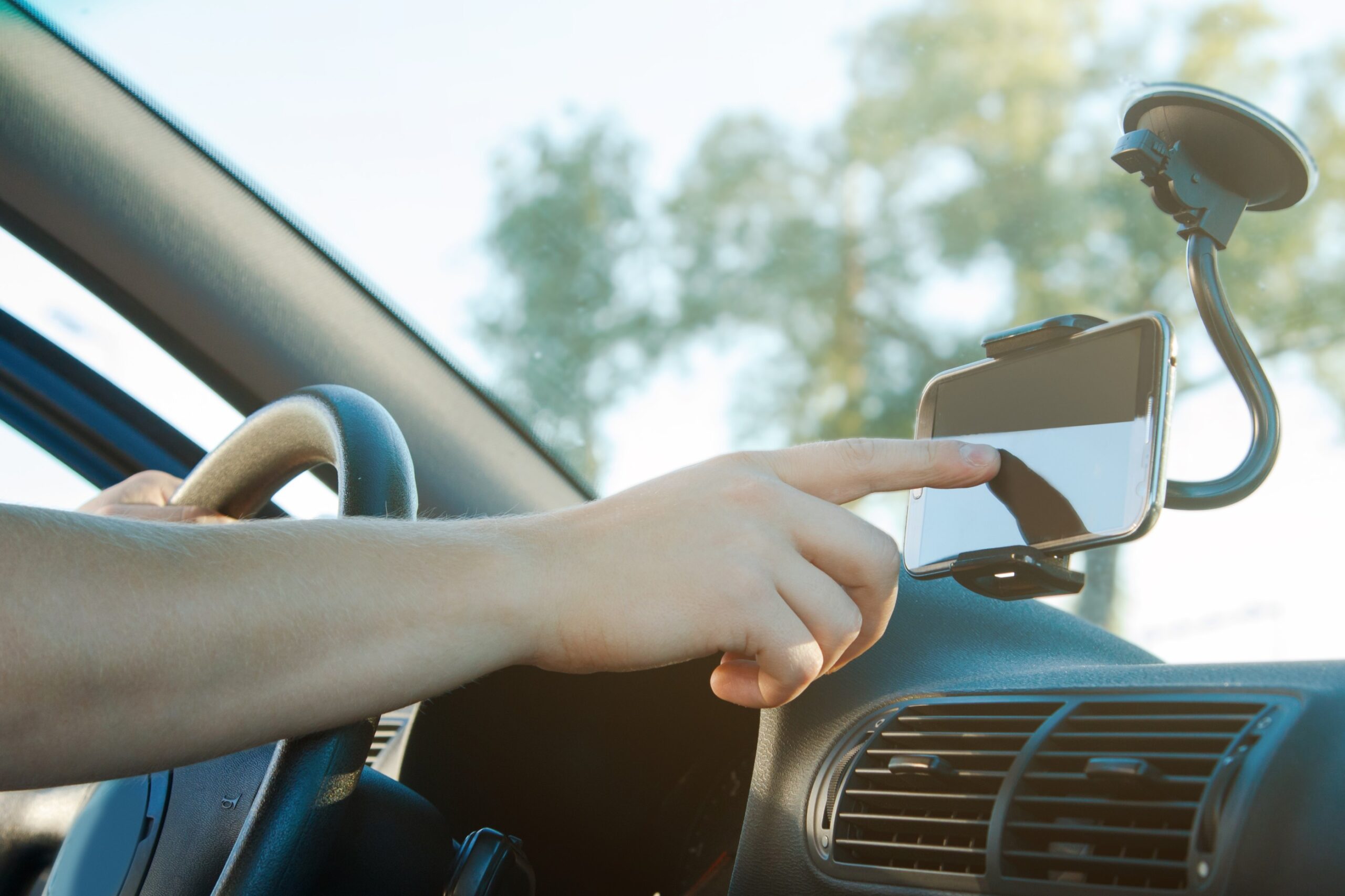How GPS Car Trackers Can Help Drivers Avoid Speeding Tickets and Promote Safer Driving – Guest Post

In today’s fast-paced world, ensuring the safety of our loved ones and vehicles is paramount. With the increasing distractions on the road and the growing concerns surrounding reckless driving, finding reliable solutions to promote safer driving habits is more important than ever. PAJ car GPS trackers offer a powerful and versatile answer, providing real-time location monitoring, valuable insights into driving behavior, and effective tools for fostering a safer driving environment. This article delves into how PAJ GPS car trackers work and how they can significantly contribute to promoting better and safer driving habits.
What is a PAJ GPS Car Tracker and How Does it Work?
A PAJ GPS car tracker is a compact electronic device designed to be discreetly installed in a vehicle. It utilizes the Global Positioning System (GPS) to pinpoint the vehicle’s exact location in real-time, transmitting this data wirelessly via cellular networks to a secure online platform or a mobile app. This allows users to monitor the vehicle’s movements, speed, and other vital parameters from anywhere with internet access.
The core functionality of a PAJ GPS tracker revolves around several key components:
- GPS Module: This component receives signals from orbiting GPS satellites, determining the device’s precise latitude, longitude, and altitude. This data forms the foundation for location tracking.
- Cellular Module: This module uses a SIM card to connect to cellular networks (typically 2G, 3G, or 4G). It transmits the GPS data and other relevant information to a central server or cloud-based platform.
- Processor and Memory: These components manage the GPS data, cellular communication, and any onboard processing required. They also store historical tracking data for later analysis.
- Power Source: The tracker can be powered either directly from the vehicle’s battery or through an internal battery. Trackers powered by the vehicle’s battery usually offer continuous tracking, while those with internal batteries require periodic recharging.
- Software and Platform: This is the user interface where tracked data is displayed and analyzed. It usually includes features like real-time tracking, historical route playback, geofencing, speed alerts, and customizable reporting.
How PAJ GPS Car Trackers Promote Safer Driving Habits:
PAJ GPS car trackers aren’t just about knowing where your vehicle is; they’re about proactively influencing and improving driving behavior. Here’s how they contribute to promoting safer driving habits:
Real-Time Location Monitoring for Peace of Mind:
The primary function of a GPS tracker is to provide real-time location updates. This feature is particularly valuable for parents monitoring teen drivers, fleet managers overseeing company vehicles, or individuals tracking elderly family members who may have cognitive impairments. Knowing the precise location of a vehicle provides peace of mind and allows for quick intervention in case of emergencies.
Geofencing: Defining Safety Zones and Boundaries:
Geofencing allows users to create virtual boundaries or “fences” on a map. When the tracked vehicle enters or exits a predefined geofenced area, the system automatically sends an alert to the user. This feature is incredibly useful for:
- Ensuring Drivers Stay Within Designated Routes: Fleet managers can set geofences around delivery routes or work zones, ensuring drivers adhere to pre-planned paths and avoid unauthorized detours.
- Restricting Teen Driver Access: Parents can create geofences around their home, school, or other safe locations, receiving alerts if their teen driver ventures outside these designated areas. This helps enforce driving restrictions and promotes responsible driving habits.
- Monitoring Elderly Drivers: Setting up geofences around familiar areas allows caregivers to be alerted if an elderly driver becomes disoriented and strays too far from home.
Speed Monitoring and Alerts: Curbing Reckless Driving:
Excessive speed is a leading cause of accidents. PAJ GPS car trackers offer speed monitoring capabilities, allowing users to set a speed limit and receive alerts whenever the vehicle exceeds that limit. This feature can:
- Deter Speeding: Knowing that their speed is being monitored can discourage drivers from speeding, promoting safer and more responsible driving habits.
- Identify Speeding Hotspots: Analyzing historical speed data can reveal areas where drivers frequently exceed the speed limit, allowing fleet managers or parents to address the underlying causes and implement corrective measures.
- Provide Evidence in Case of Accidents: In the unfortunate event of an accident, the speed data recorded by the GPS tracker can provide valuable evidence to determine fault and reconstruct the events leading up to the collision.
Harsh Driving Detection: Identifying Aggressive Driving Behaviors:
Many PAJ GPS car trackers incorporate sensors that can detect harsh braking, rapid acceleration, and sharp turns. These events are indicative of aggressive driving behavior, which significantly increases the risk of accidents. By tracking and analyzing these events, users can:
- Identify Drivers Engaging in Risky Behaviors: Fleet managers can pinpoint drivers who consistently exhibit harsh driving habits, providing targeted coaching and training to improve their driving skills.
- Provide Feedback and Promote Self-Awareness: Sharing harsh driving event data with drivers can help them become more aware of their driving habits and encourage them to adopt a more cautious and defensive driving style.
- Reduce Vehicle Wear and Tear: Harsh driving habits can lead to increased wear and tear on vehicles, resulting in higher maintenance costs. By promoting smoother driving, GPS trackers can help extend the lifespan of vehicles.
Historical Route Playback: Analyzing Driving Patterns:
PAJ GPS car trackers store historical tracking data, allowing users to replay past routes and analyze driving patterns. This feature is invaluable for:
- Reviewing Driving Performance: Fleet managers can review the routes taken by their drivers, identifying any deviations from planned routes or instances of unauthorized vehicle use.
- Understanding Driving Habits: Analyzing historical route data can reveal patterns of speeding, harsh braking, or other risky behaviors, providing insights into a driver’s overall driving style.
- Reconstructing Accident Scenes: In the event of an accident, historical route data can be used to reconstruct the events leading up to the collision, providing valuable information for investigations and insurance claims.
Immobilization and Anti-Theft Features: Preventing Unauthorized Use:
Some PAJ GPS car trackers offer remote immobilization capabilities, allowing users to remotely disable the vehicle’s engine in the event of theft or unauthorized use. This feature provides an extra layer of security and can help prevent the vehicle from being driven away.
Enhanced Vehicle Maintenance:
Beyond directly influencing driving behavior, some PAJ GPS trackers can integrate with vehicle diagnostics to monitor engine health, battery voltage, and other critical parameters. This data can help predict potential maintenance issues, allowing for proactive repairs and preventing breakdowns that could lead to accidents.
Driver Scoring and Gamification:
Advanced GPS tracking platforms can generate driver scores based on various factors, such as speed, harsh braking, and adherence to geofences. Gamification elements, like leaderboards and rewards, can be incorporated to motivate drivers to improve their scores and adopt safer driving habits.
Driver Training and Coaching Opportunities:
The data collected by PAJ GPS car trackers provides valuable insights that can be used to create targeted driver training programs. By analyzing driving patterns and identifying areas for improvement, fleet managers or parents can provide personalized coaching to help drivers develop safer driving skills.
Choosing the Right PAJ GPS Car Tracker:
When selecting a PAJ GPS car tracker, consider the following factors:
- Tracking Accuracy: Look for a tracker with high GPS accuracy to ensure precise location monitoring.
- Real-Time Tracking Frequency: Determine how frequently you need location updates. More frequent updates consume more data but provide more granular tracking.
- Battery Life: If you choose a tracker with an internal battery, consider the battery life and how often it needs to be recharged.
- Features and Functionality: Choose a tracker with the features that are most important to you, such as geofencing, speed alerts, harsh driving detection, and immobilization capabilities.
- Ease of Use: Look for a tracker with a user-friendly platform and mobile app that is easy to navigate and understand.
- Cost: Compare the cost of different trackers, taking into account the initial purchase price, subscription fees, and any other associated costs.
- Customer Support: Choose a tracker from a reputable manufacturer that offers reliable customer support.
Bio:
Aiden Blake is a legal content contributor who writes about traffic law, road safety, and criminal justice topics.

